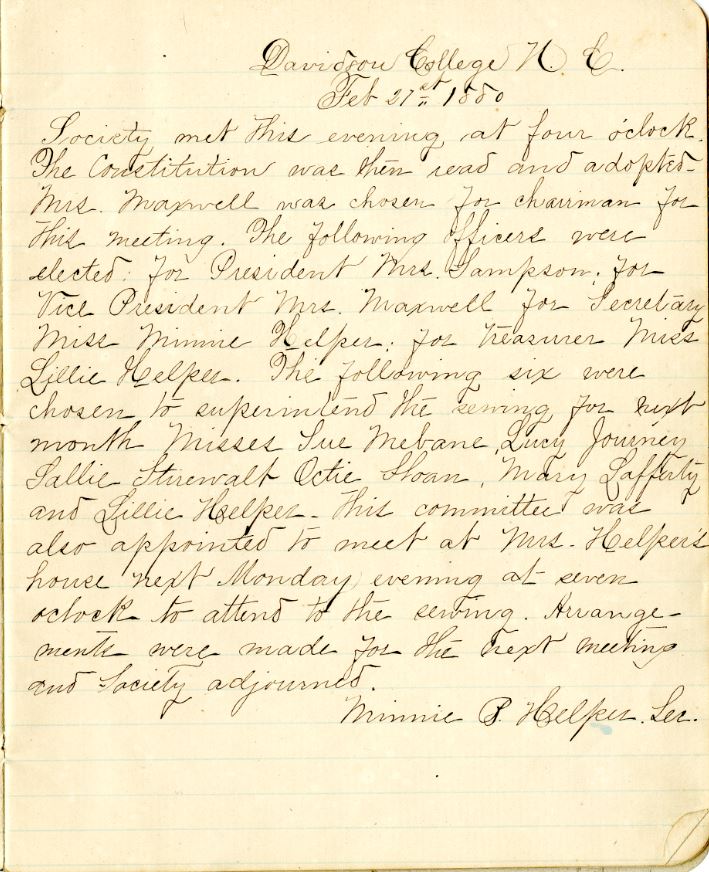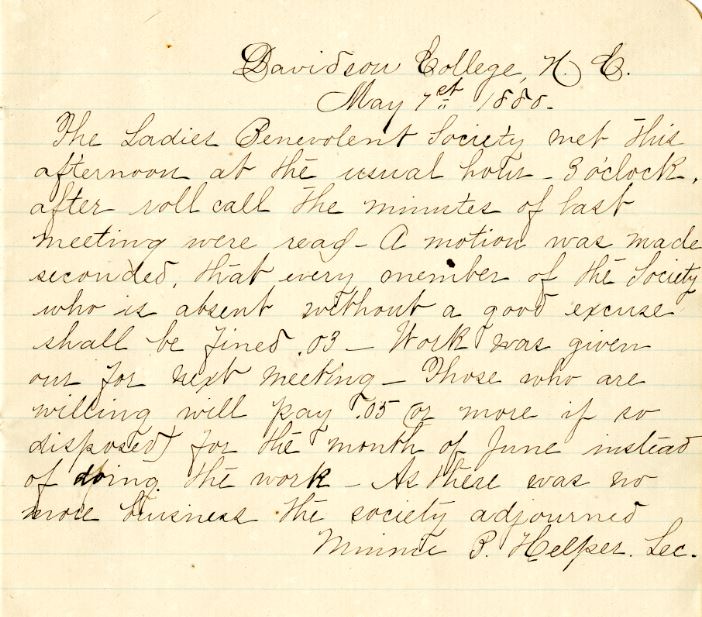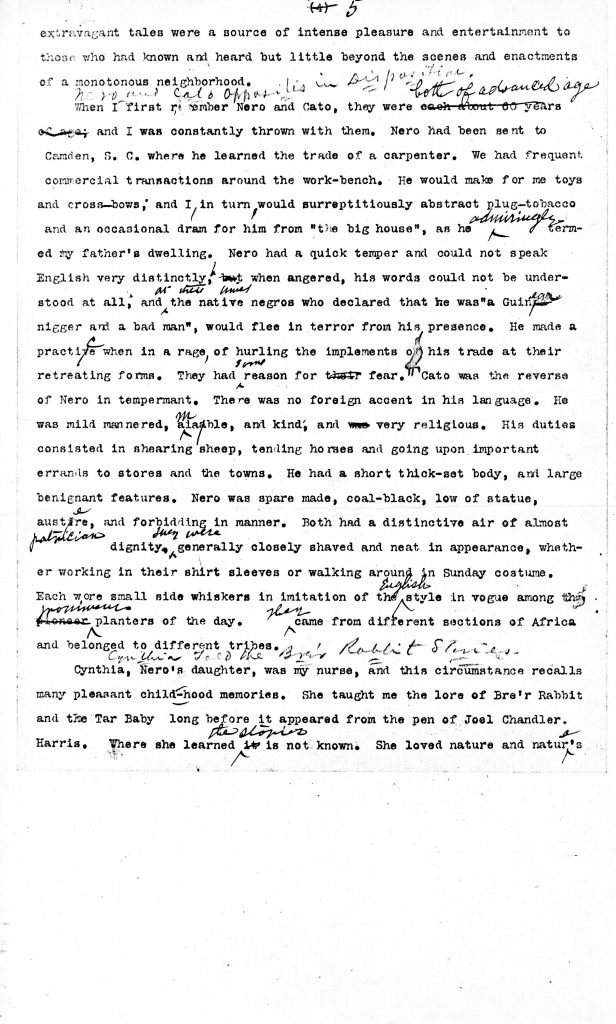In Fall 2019, Archives, Special Collections, & Community (ASCC) had the privilege of working with Dr. Rose Stremlau’s “HIS 306: Women and Gender in U.S. History to 1870” course. Over the course of a semester, students researched the history of women and gender in the greater Davidson, North Carolina area using materials in the Davidson College Archives and other local organizations. The following series of blog posts highlights aspects of their research process.
Tommy Bohannon is a senior Biology major and History minor at Davidson College. He is extremely excited about working on this archival research in order to better grasp an understanding of the role women have played in Davidson’s history.
In order to contextualize the history of Davidson College in the mid-19th century, it is important to recognize that the town was very small and relatively isolated from populated urban locations. The relationship between the town and the college was extremely strong, and societal traditions were largely based on family units. When visitors came into town, they stayed with the families that lived there – no hotels were available to accommodate their presence. Women in these families were expected to be gracious hosts, and extensive pressure was put upon them to entertain visitors despite a general lack of resources to do so.
The A Girl of the Seventies article in the Davidson College archives goes into detail about how women were forced to play the role of the hospitable mother and wife in the years between 1869-1875. According to the record, “there was no market,” but rather “one or two small groceries supplied the heavier items of food,” with items like “eggs, butter, chickens, fresh beef, mutton, or pork,” coming from local individuals with strong personal ties.1 To have a grand feast was a special occasion, one that women were pressured into perfecting. In one instance, a local woman apologized to a visiting Governor, believing that her food was “too simple for such a distinguished guest.” The pressure on Davidson women to prepare extravagant feasts for visitors was extremely high, especially given the lack of options in terms of food sources.

Article written by Lucy Phillips Russell and found in the DC0157s manuscript collection in the Davidson College Archives. The content describes conditions in Davidson in the late 19th century.
Guests were treated with the utmost respect and were typically welcomed even if they appeared unannounced. In one circumstance where a woman was noted to have objected unexpected guests, she told her husband that all she had for them to eat was “some mush and milk,” to which they obliged and ate with gusto.2 Visitors were polite, likely understanding the difficulties that women encountered in trying to assemble grand dinners. These difficulties were normalized in the town of Davidson, and women were expected to fulfill the role of being gracious hosts without complaining.
This source will be extremely useful in noting the domestic labor of women in the town of Davidson. With descriptions of the roles that women played in acquiring food products and producing them for their families and occasional visitors, this source would inform my research on the role that women played in food production in the Antebellum South. The norm of women being subjected to domestic labor was extremely ingrained in the history of Davidson College, and this source is great for recognizing the extent of that subjugation.
Works Cited:
“A Girl of the Seventies.” DC0157s Lucy Phillips Russell Collection. Davidson College Archives.












